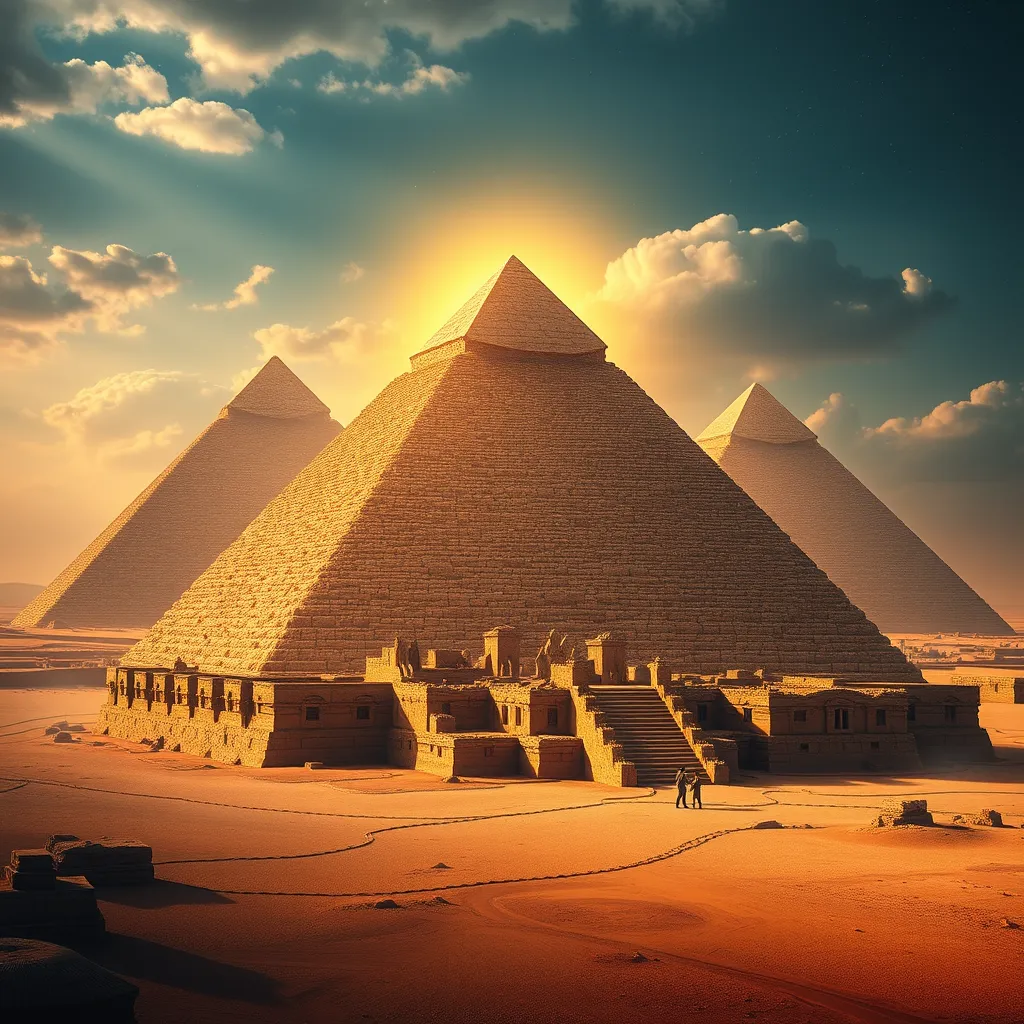The Secrets of the Pyramids: Hidden Knowledge of the Ancient Egyptians
I. Introduction
The Pyramids of Egypt stand as a testament to the ingenuity and sophistication of ancient Egyptian civilization. These monumental structures, primarily built as tombs for pharaohs, have captivated the imaginations of historians, archaeologists, and the general public alike. Their significance goes beyond mere architecture; they represent a complex interplay of religion, culture, and power in ancient Egypt.
This article aims to explore the hidden knowledge and mysteries surrounding the pyramids, delving into their historical context, architectural marvels, spiritual significance, and the ongoing quest for understanding their secrets.
II. Historical Context of the Pyramids
The construction of the pyramids spans several centuries, particularly during the Old and Middle Kingdom periods of ancient Egypt. The most famous of these, the Great Pyramid of Giza, was built during the reign of Pharaoh Khufu around 2580–2560 BC.
- Timeline of Pyramid Construction:
- Step Pyramid of Djoser (c. 2670 BC)
- Pyramids of Giza (c. 2580–2560 BC)
- Pyramid of Senusret II (c. 1880 BC)
- Key Pharaohs:
- Khufu – Builder of the Great Pyramid
- Khafre – Builder of the second pyramid at Giza
- Menkaure – Builder of the third pyramid at Giza
The cultural significance of the pyramids in ancient Egyptian society cannot be overstated. They were not only royal tombs but also symbols of the pharaoh’s divine power and a bridge to the afterlife.
III. Architectural Marvels: Engineering Techniques and Innovations
The construction of the pyramids is one of the most remarkable achievements in human history. The ancient Egyptians employed a range of engineering techniques and innovations to create these colossal structures.
- Construction Methods: Theories suggest the use of ramps, levers, and sledges to transport massive stone blocks, some weighing several tons.
- Materials Used: Primarily limestone, granite, and basalt were utilized. The outer casing stones were often polished Tura limestone, which reflected sunlight beautifully.
- Alignment and Orientation: The pyramids exhibit remarkable precision in alignment with the cardinal points, suggesting advanced knowledge of astronomy.
The logistics of labor and resources played a crucial role in pyramid construction, with thousands of workers employed, many of whom were skilled laborers rather than slaves, as commonly believed.
IV. Symbolism and Spiritual Significance
The pyramids served a dual purpose: as tombs and as monumental symbols of the pharaoh’s journey to the afterlife. Their shape is believed to represent the rays of the sun, guiding the deceased toward the heavens.
- Pyramids as Tombs: They were designed to protect the body and possessions of the pharaoh, ensuring a safe passage to the afterlife.
- Symbolic Meanings: The pyramid shape itself symbolizes strength and endurance, while the apex represents the connection between earth and the divine.
- Rituals and Beliefs: Various rituals were conducted, including the Opening of the Mouth ceremony, designed to prepare the deceased for the afterlife.
V. Theories of Hidden Knowledge
Many scholars and enthusiasts speculate about the advanced knowledge possessed by the ancient Egyptians, particularly related to science, mathematics, and astronomy.
- Advanced Scientific Knowledge: Some theories suggest that the Egyptians had a sophisticated understanding of geometry and physics, allowing them to achieve such precise constructions.
- Astronomical Alignments: The alignment of the pyramids with certain stars and constellations raises questions about the Egyptians’ astronomical knowledge and its significance in their culture.
- Lost Technologies: Speculations abound regarding technologies that may have been used in pyramid construction, which have since been lost to time.
VI. Recent Discoveries and Archaeological Findings
With advancements in technology, new archaeological discoveries continue to shed light on the secrets of the pyramids.
- Notable Discoveries: Recent excavations have uncovered hidden chambers, artifacts, and even boat pits that offer insights into the burial practices of the pharaohs.
- Technological Advances: Modern tools such as satellite imaging, ground-penetrating radar, and 3D scanning have revolutionized the exploration of these ancient structures.
- Insights Gained: Recent research suggests that the workforce was likely organized in a way that allowed for efficient construction, challenging previous notions of how the pyramids were built.
VII. The Pyramids in Popular Culture
The fascination with the pyramids extends into popular culture, influencing literature, film, and art through the ages.
- Representation in Literature and Film: From classic novels to modern blockbuster films, the pyramids are often depicted as symbols of mystery and ancient wisdom.
- Modern Interpretations: Various theories and myths have emerged, fueled by popular media, that sometimes distort the historical facts surrounding the pyramids.
- Impact on Perception: The portrayal of the pyramids in popular culture has shaped public interest and curiosity about ancient Egyptian knowledge and civilization.
VIII. Conclusion
In summary, the Pyramids of Egypt are not merely ancient tombs; they are monumental symbols of a civilization that possessed remarkable knowledge and skills. The exploration of their construction, spiritual significance, and the mysteries they hold continues to fascinate scholars and the public alike.
The ongoing quest to uncover the secrets of the pyramids reveals much about ancient Egyptian society, its beliefs, and its enduring legacy. As new discoveries are made, we are reminded of the complexity and richness of this ancient civilization, leaving us with more questions than answers about their hidden knowledge.




